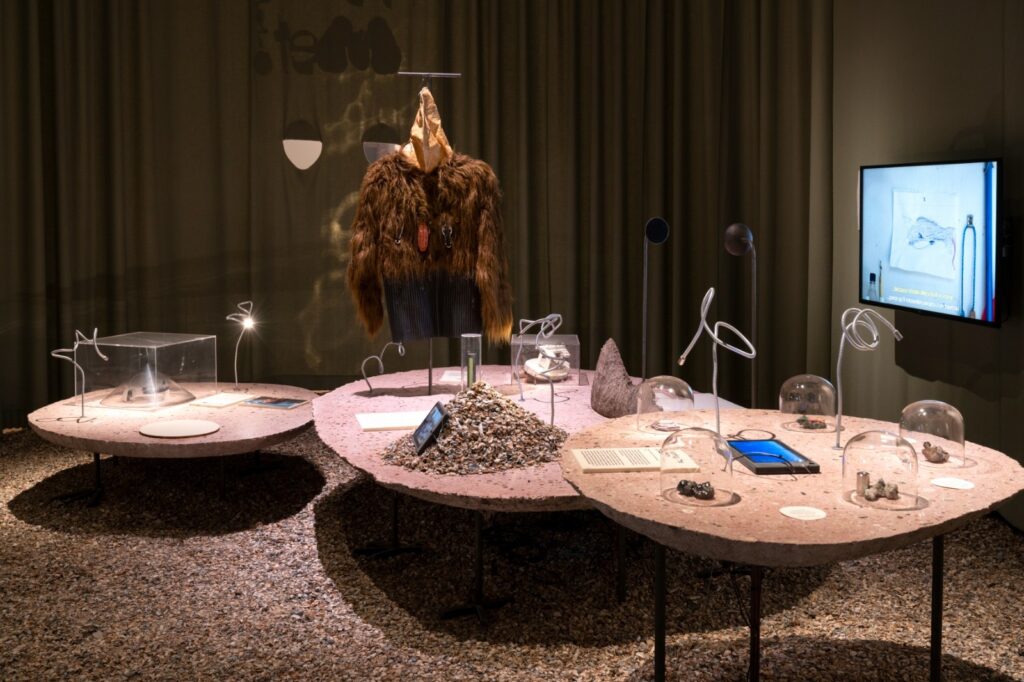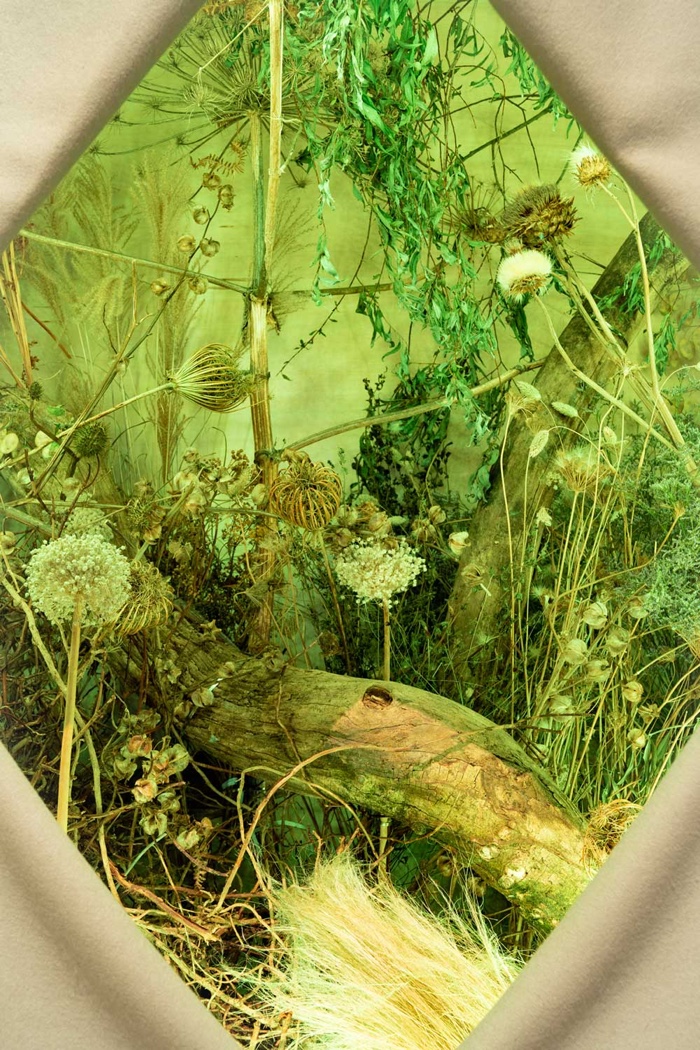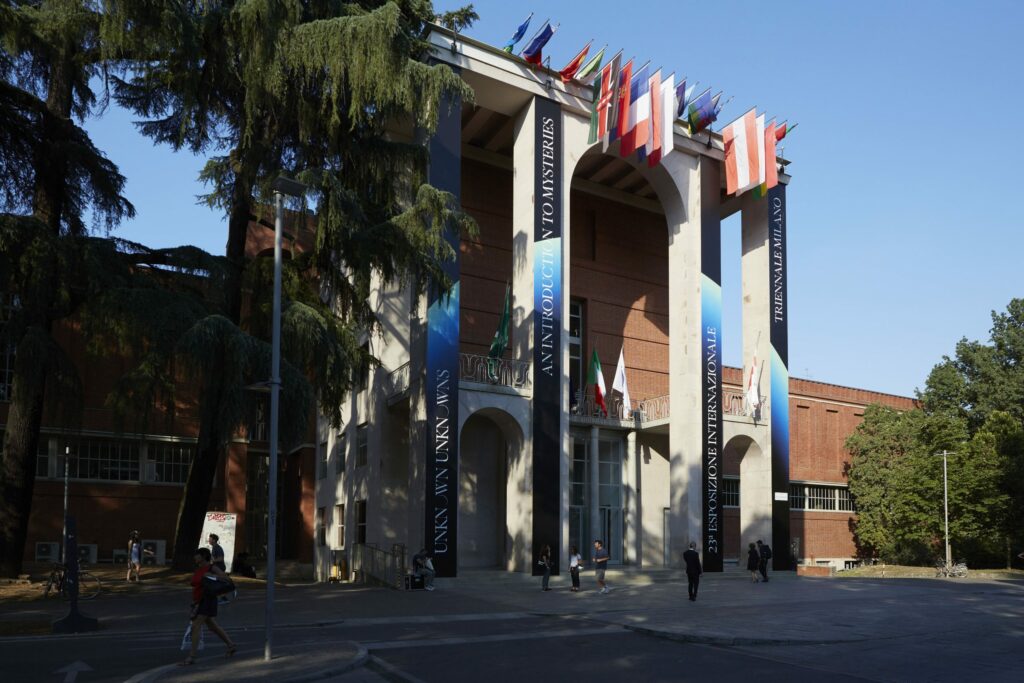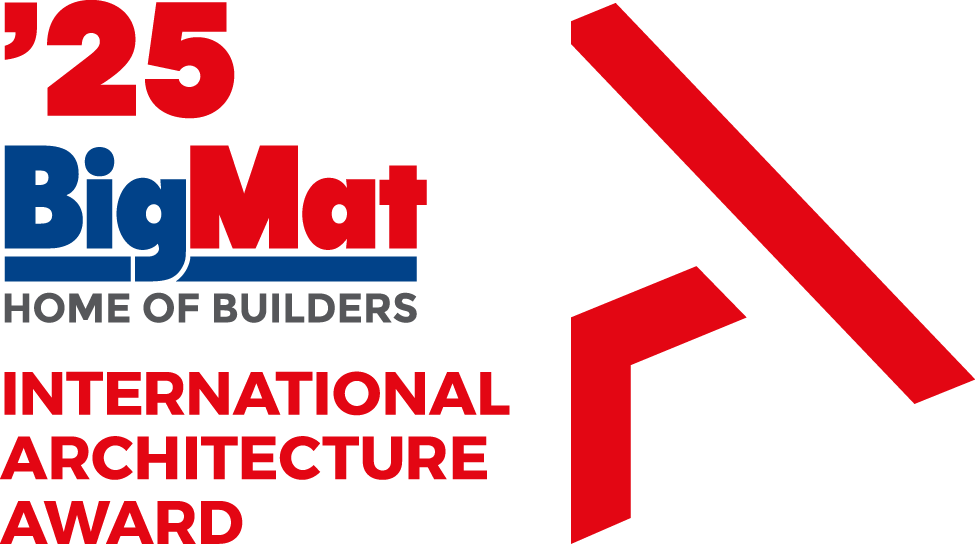Studio Ossidiana have designed the „Have we met?“ exhibition as a collective body that doubles as an observatory, combining human, animal, botanical and mineral components. Visitors are welcomed into the belly of this living being that temporarily inhabits the triennale site.

New perspectives on the non-human world could revolutionise how humans live together with worms, ferns, bacteria, and all other life forms on earth. Have we met? presents a range of possible collaborative tools developed by practitioners across art and design, agriculture, and data- and marine sciences, as well as a series of projects advancing equality in multispecies cohabitation and tools that show how humans can reorient themselves towards non-humans.
Practical info
Have we met? Humans and non-humans on common ground
Dutch pavilion at the 23rd Triennale Milano International Exhibition; winner of the Golden Bee Award
July 15–December 11, 2022
Triennale Milano, Viale Alemagna, 6, Milan
Italy
An urban area in Rotterdam, a regenerative farm in the Netherlands’ rural east, and an abandoned North Sea oil rig: these three ecologically diverse sites help to explore the possibilities for interspecies relationships. While nature studies traditionally rely on quantitative data, human experience is usually assessed by qualitative means; could these be combined to give better insights into how humans and non-humans can learn to cooperate?

Have we met? explores a range of possible collaborative tools developed by practitioners across art, design, agriculture, and data- and marine sciences. Works include Chicken Mobile, designed by Harald den Breejen and Sjoerd van Leeuwen for regenerative farm Bodemzicht. The mobile offers a simple solution for regenerating compacted and degraded soil by recalibrating the natural rhythms between grass and grazing animals. Also on show is Borgþór, a documentary by Brynjar Sigurðarson and Sebastian Ziegler following a hermit who spends the winter looking for a bull fish in the remote Icelandic countryside. The hermit patiently investigates what might interest the fish in an attempt to find a common ground.

With contributions from Harald den Breejen and Sjoerd van Leeuwen (in collaboration with regenerative farm Bodemzicht); Dear Hunter; Embassy of the North Sea in collaboration with Darko Lagunas; Joost Emmerik; Christine Hvidt, Philipp Groubnov, Andrzej Konieczny, Alexander Köppel, Leon Lapa Pereira and Vivien Vuong (ArtScience Interfaculty students at the University of the Arts The Hague in collaboration with Rodrigo Delso and Eric Kluitenberg); Keer Hu, Yuzhi Liu and Jiafeng Zhu; Ian Ingram and Theun Karelse, Gisto; Takuma Kikuchi, Lucy Li, Florian Sapp and Alan Schiegl; Fiona Middleton; Ania Molenda; Studio Brynjar and Veronika; Togar; Sander Turnhout; Leena Valkeapää and Oula A Valkeapää.
Studio Ossidiana has designed the exhibition as a collective body that doubles as an observatory, combining human, animal, botanical and mineral components. Visitors are welcome in the belly of this living being that temporarily inhabits the Triennale site.
Zoöp
Have we met? builds on the Zoöp model collaboratively developed by Het Nieuwe Instituut. A Zoöp (cooperation with all zoë, the Greek for “life”) commits to making the interests of non-humans part of its organisational decision-making, with a Speaker for the Living representing the voices and interests of non-human life. The Speaker acts as observer, advisor and teacher in the organisation, transforming it into a regenerative operation. On international Earth Day 2022, Het Nieuwe Instituut became the first Zoöp.

23rd Triennale Milano
Unknown Unknowns: An Introduction to Mysteries is the title for the 23rd International Exhibition, open from July 15 until December 11, 2022. It examines “what we don’t know we don’t know” through exhibitions, installations and special projects. In the light of this theme, the Dutch Pavillion has won this edition’s Golden Bee Award. The Triennale presents its Bee Awards to recognise three international participants on the basis of the precision of their interpretation of the theme and the quality and relevance of the ideas they put forth.
Het Nieuwe Instituut
The Dutch Ministry of Education, Culture and Science invited Het Nieuwe Instituut to curate the official Dutch contribution to the 23rd Triennale Milano International Exhibition.
Het Nieuwe Instituut is the Netherlands’ national museum and institute for architecture, design and digital culture, based in Rotterdam. Through its exhibitions, research, and wide-reaching national and international public programmess, the institute engages thinkers, designers, makers and diverse audiences to critically reflect on the urgent issues confronting the past, present and future.


Commissioner: Aric Chen (General and Artistic Director, Het Nieuwe Instituut)
Project Leader: Francien van Westrenen (Head of Agency, Het Nieuwe Instituut)
Curators: Klaas Kuitenbrouwer (Senior Researcher, Het Nieuwe Instituut) and Ellen Zoete (Programme Manager, Het Nieuwe Instituut)
Producers: Nikita Hurkmans and Wietske Nutma
Spatial design: Studio Ossidiana (Giovanni Bellotti, Alessandra Covini)
Graphic design: Mislav Žugaj and Gailė Pranckūnaitė
Exhibition supported by the Dutch Ministry of Education, Culture and Science. Programme supported by the Embassy and Consulate General of the Kingdom of the Netherlands in Italy.

